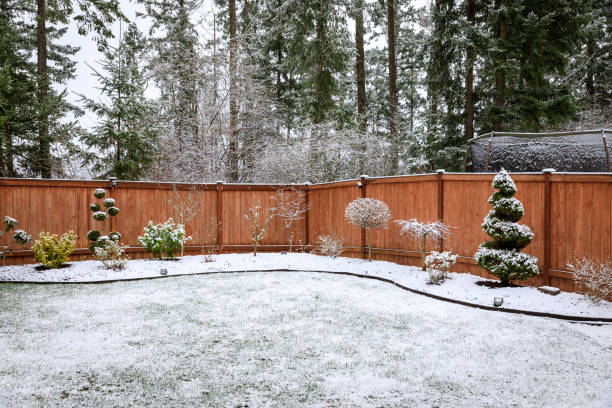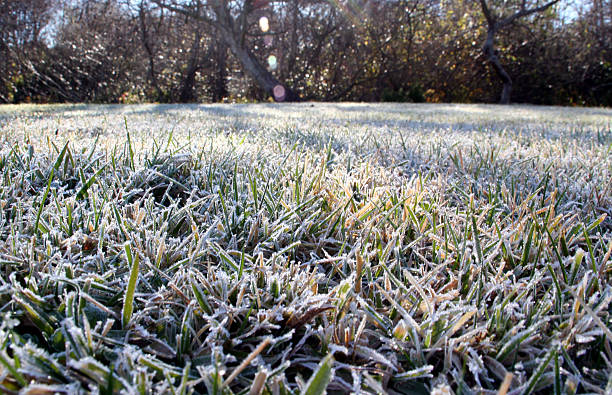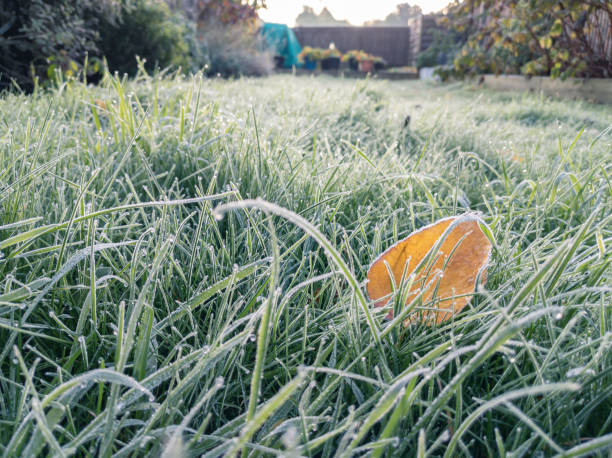
Aerating your lawn can help it to stay healthy and green, but is it possible to aerate in the cold winter months? The answer is yes! Aerating during colder weather has its advantages and disadvantages. This article will discuss everything you need to know about aerating your lawn in the winter cold.
We’ll look at why you should consider aeration during colder months, what type of soil does best with winter aeration, and how to prepare for an aeration job in cold temperatures properly. With this information, you’ll be able to make a well-informed decision on whether or not wintertime aeration is suitable for your lawn. So read on and learn all there is to know about keeping your grass looking lush year-round!
Can You Aerate your Lawn in a Winter Cold?

The short answer is yes, you can aerate your lawn during the cold winter. Aeration helps to loosen compacted soil and increase air circulation, allowing water and nutrients to penetrate deeper into the ground. This helps create an environment that is conducive to healthy grass growth. As long as temperatures remain above freezing, aeration will still be adequate.
What is Aeration?
Aeration is a process that involves perforating the soil with small holes using a unique tool known as an aerator or corer. This helps reduce compaction, improves drainage and water penetration, increases nutrient uptake, and encourages microbial activity in the soil. It also helps promote new growth by allowing oxygen and other nutrients to better reach grass roots.
Benefits of Aerating Your Lawn in Winter
Aerating your lawn in winter has several benefits over doing so during warmer months. The most notable is that fewer weeds are active in cold weather, meaning less competition for newly planted grass seeds or newly-established turfgrasses.
Additionally, cold temperatures help slow evaporation rates, reducing irrigation costs while increasing water penetration into the soil. Plus, since there are no leaves on trees during winter, there’s plenty of sunlight available for new grass seedlings to flourish once they’re established!
Making Plans for Aerating Your Lawn in the Winter

When planning to aerate your lawn in the winter, it’s essential to ensure temperatures are above freezing. This will ensure that the process is adequate and the holes you make can stay open. You should also consider what type of soil you have before beginning an aeration job – sandy soils tend to be more susceptible to compaction and may require more frequent aeration.
Finally, ensure that you have the right equipment for the job – a corer or aerator of some sort will be necessary, and it’s essential to follow all safety protocols when using any machinery outdoors in cold temperatures.
When to Aerate Your Lawn
The optimal time for aeration is during fall or spring when temperatures are milder. But if you live in an area with mild winter weather, then aerating your lawn during this season can also be beneficial.
That said, you should wait until there is no snow on the ground (or at least until all snow has melted) before starting to aerate your lawn since doing so while there is still snow present could damage its surface. Additionally, aeration should be done before frost sets in since damp soil freezes faster than dry soil and can cause more harm to your lawn’s roots if they become too frozen too quickly.
Tools You Will Need
To get started with aerating your lawn in the winter, you will need a few essential tools, such as a manual core or spike aerator, a garden hose or sprinkler, and a rake or broom for cleaning up afterward.
Manual core or spike aerators are typically used for small grass areas. In contrast, larger areas may require a motorized one that offers more power and deeper penetration into the ground surface.
If you already have access to these tools, then great; otherwise, consider renting them from local home improvement stores or online rental services like Home Depot’s Tool Rental Program, which offers competitive rates for equipment rental.
Benefits of Aerating Your Lawn
Aerating your lawn in the winter has many benefits beyond just promoting healthier grass growth—it also helps prevent weed germination by disrupting weeds’ ability to take root in compacted soils.
Additionally, it increases oxygen levels within the soil which helps strengthen roots and encourages healthy microbial activity that can improve nutrient availability for plants growing aboveground. Lastly, it allows air and water to penetrate deeper into the soil, making it more conducive to healthy plant growth.
Aerating your lawn during winter is a great way to ensure that your grass remains healthy despite cold outside temperatures. It loosens compacted soil allowing for better absorption of water and nutrients into the root system while preventing weed germination and improving air circulation within soils. This further strengthens roots and encourages healthier plant growth overall.
With proper planning and access to appropriate tools such as manual core or spike aerators, homeowners everywhere can enjoy healthier-looking grass come springtime!
How To Safely Aerate Your Lawn During Cold Weather

It’s important to keep several things in mind when aerating your lawn during cold weather: First, make sure you use the right tool for the job – an aerator or corer specifically designed for winter use should be used rather than a standard summer model.
Second, rake up any debris before starting – this will help prevent clogging and ensure effective results. Finally, if possible, avoid walking on freshly-aerated soil until it is scorched, as this could cause compaction issues and impede later growth efforts!
Conclusion:
There are numerous benefits when it comes to aerating your lawn during cold weather, but it must be done correctly to ensure optimal results!
Be sure to use a specially designed winter model of an aerator or corer and clear away any debris before beginning work – this will help minimize problems down the road while helping maximize your chances of success come springtime!
By following these steps, you can safely take advantage of all the benefits cold weather offers when it comes time to aerate your lawn! Intended Audience: Homeowners want tips on caring for their yards in cold weather.






